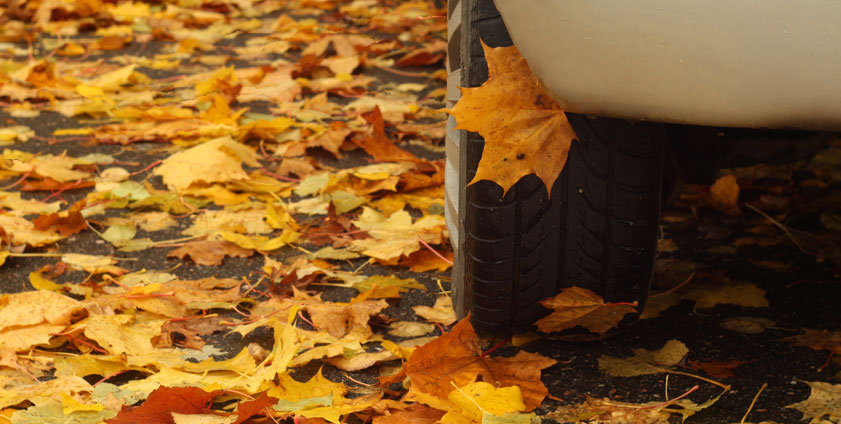Fall Back on Safety

November 15, 2019
As the days get shorter and the weather turns colder, we must focus our attention on safety hazards that are more prevalent this time of year. Remember the following as you’re outside enjoying the fall season:
Yard Work
When raking leaves or performing other yard work, we often are required to twist and turn in various positions. To avoid the pain and discomfort of a strained back, know your personal limitations and ask for help when you need it.
If you move an item, such as a bag of wet leaves, adjust your feet when you turn or switch directions – never twist your back. Take regular breaks to stretch your muscles and pay attention to your body’s warning signs. If you feel pain or fatigue, slow down or discontinue the work.
Power Tools
Whether you are blowing leaves or trimming trees, certain risks inherently come with operating power tools. To avoid injury, ensure all hand tools are maintained in good condition and safety guards are in place. You should only operate machinery that is properly guarded and sufficiently supported, and always according to the manufacturer’s instructions.
Slips, Trips and Falls
Wet leaves can make walkways slick, and ice and snow can make outside surfaces difficult to navigate. The key to avoiding slips, trips and falls is to take the safest – not the quickest – route. It’s also important to make sure your footwear has adequate tread and provides good traction. Shoes with softer soles are better for slippery indoor conditions, while harder, more rugged cleat-like soles are good for outdoor use.
Driving Safety
During this time of year, driving conditions can change quickly. When it rains, wet leaves on the ground become slick, and a temperature drop of just a few degrees can turn precipitation to ice and snow. When road conditions warrant, slow down and allow extra time to reach your destination. Allow plenty of room when following a vehicle, and avoid abrupt steering maneuvers, slamming on the brakes or accelerating quickly.
In addition, watch out for deer on roadways. Deer generally travel in herds, so if you see one, there’s a good chance others are in the vicinity. Reduce your speed at night – particularly on rural roads – since deer are most active between 6 and 9 p.m. Also, pay attention to deer crossing signs, and use your vehicle’s high-beam headlights to look for the eye-shine of deer near the edge of a road.
By focusing on the task you are performing, paying attention to your surroundings and always wearing the proper personal protective equipment for the job, you can remain free from injury regardless of what Mother Nature throws our way.